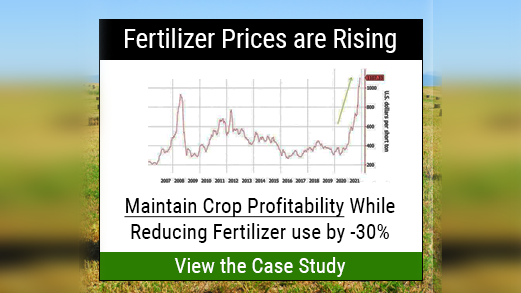Manage Pesticide Resistance
It’s high on the list of grower nightmares. An important and reliable pesticide suddenly stops working. More of the product is applied, but with unacceptable results. It’s a well accepted fact that sooner or later pests and diseases develop resistance to synthetic chemicals. Now what?
One answer is to switch products. Switching products may help, but the same dynamics are at play and the problem will likely reoccur. But there is another answer: Confound the pests with strategically timed applications of more complex chemistries.
Complex chemistry is the trademark of biopesticides, which have emerged as the number-one tool in helping growers combat resistance. Biopesticides help manage resistance in two ways. When a grower substitutes a biological for a conventional pesticide, pests and disease populations are no longer being exposed to the synthetic material they’re building resistance to. This extends the efficacy and lifespan of the grower’s most critical synthetic materials. Also, due to their complex chemical nature, pests and diseases do not easily build resistance to biopesticidal compounds.
“The very worst insecticide approach is to find something that works and stick with it,” says Dr. David G. Riley, vegetable research entomologist at the University of Georgia, who specializes in resistance management of diamondback moth in brassicas. “And,” he adds, “if a product begins to fail, the very last thing to do is reapply the same product.”
The Search For Alternatives
Growers need alternative materials to supplement their crop protection programs.
Dr. John Trumble, a University of California (UC) Riverside professor of entomology and consultant to some of California’s largest fresh market tomato, celery, and pepper growers, says rotating biopesticides with synthetic chemicals is “absolutely critical.”
“We use biopesticides on a regular basis to break the cycle of harder chemicals and try to prevent resistance development,” he says. Trumble points out that the growers he consults are very receptive to using biopesticides because “they’ve been stung before by resistance development.”
For Trumble, the task of creating a viable rotation program is broader than just recommending crop protection materials. He conducts a cost analysis to determine how to economically rotate biopesticides into the program. “We set up a program and run an economic analysis to find out what the net return was for the compounds that were sprayed,” he explains. “That, to me, is the best way to get growers to do it. If a program doesn’t pencil out — show a return on investment — it makes no sense to participate.”
Another tool used by both Trumble and Riley is to follow the guidelines outlined by the Insect Resistance Action Committee (IRAC) — an arm of the industry association CropLife — to avoid using materials with similar modes of action which leads to resistance. Similarly, the Herbicide Resistance Action Committee (HRAC) and the Fungicide Resistance Action Committee (FRAC) have been organized to assist in combating resistance issues in weeds and diseases.
“More and more, we are seeing bio-pesticides being put into conventional programs, and that’s what we’re targeting,” says Denise Manker, AgraQuest’s vice president of global development. “The goal,” she adds, “is that growers will have more tools longer because they won’t wear out the single-site fungicide.”
Resistance Management Using Biopesticides
The ability of biopesticides to extend the life of conventional products is rooted in the fact that pests and diseases don’t usually develop resistance to biological products themselves.
John Francis, director of marketing and technical services at BioWorks Inc, Fairport, NY, explains that most synthetic pesticides focus on a specific biological pathway or certain biological functions in the nervous system of an insect and, over time, insects or fungi develop resistance. “Initially the synthetic product works just fine,” he says, but in time, the pest just mutates around it.”
Unlike products based on synthetic chemistry which are usually comprised of a single compound, biopesticides have an active ingredient or formulation that is derived from biological or natural origins. They contain multiple active ingredients and, by extension, are less prone to resistance. Scientifically it’s incorrect to say resistance will never show up, but the occurrence is low.
The increase in use of biological materials is not limited to crop protection. Michael Braverman, manager, Biopesticide Program, IR-4 Project, Rutgers University, points out that biological materials have a wide variety of applications. As an example, he helped register thymol with EPA. Today, thymol has become a popular tool for beekeepers to control varrora mites in honeybees.
“The reason,” says Braverman, “is that the varroa mites were developing resistance to the conventional miticides.” Beekeepers have not reported mites developing resistance to the biological product.
It’s no secret that over time pests and diseases develop resistance to synthetic chemicals, but savvy growers and crop consultants are developing ways to combat the problem. Biopesticides continue to gain momentum as excellent tools to assist growers in keeping resistance under control without sacrificing efficacy or crop quality.








